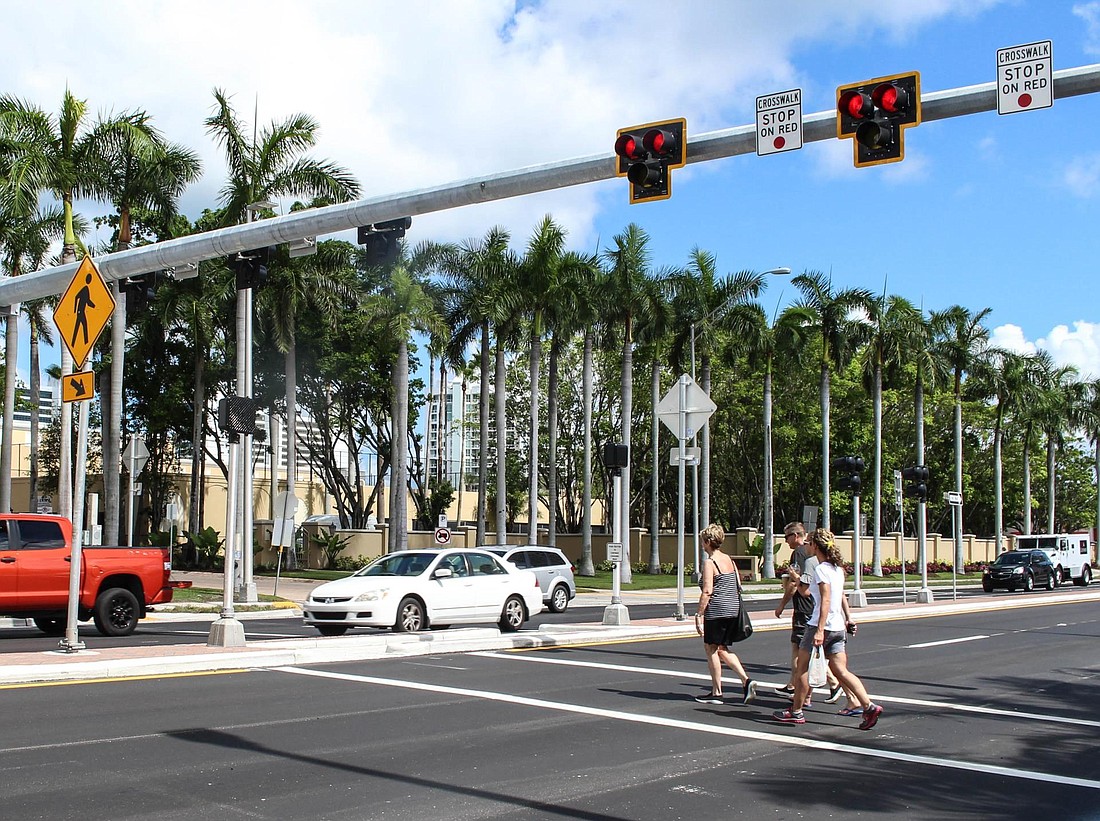- December 21, 2024
-
-
Loading

Loading

Pedestrian deaths nationwide have been on the rise for more than a decade, and growing much faster than population.
The U.S. is at a 25-year high for pedestrian deaths. Florida has the second highest rate of pedestrian deaths as a share of population among all 50 states, and saw pedestrian deaths rise 40% over the past decade.
The National Highway Transportation Safety Administration says pedestrians are to blame 60% of the time. A study of pedestrian deaths in Florida published in the Journal of Accident Analysis and Prevention in 2005, before the latest massive increase in pedestrian deaths, found that police reports listed pedestrians at fault 80% of the time.
Most frequently, pedestrians were in the roadway — NOT in a crosswalk — when the accidents occurred.
Which raises the question: Are roads for cars, pedestrians and bicyclists, or all of the above? As one critic put it: “Statistics [blaming pedestrians] are based on the assumption that roadways are for cars, and that pedestrians are visitors. There would be almost no pedestrian deaths if people did not choose to drive, or if our cities were designed for safety instead of for motorist convenience.”
Well, that is true. But it is also true that if drivers just randomly drove through others’ front yards, and sometime hit people, we would say, no, yards are for people not cars and the driver is in the wrong. Just like the parts of roads that are not crosswalks are designated for cars, and pedestrians walking there are in the wrong.
I walk almost every day of the year, and I almost always walk through a commercial neighborhood with lots of shops and restaurants across the street from a lot of resorts, so there are many crosswalks and a lot of pedestrian traffic. And every day I watch both drivers and pedestrians do stupid stuff. Pedestrians jaywalk within a block of crosswalks, turn suddenly off sidewalks into the road and often just don’t pay attention. Drivers go over the speed limit, about half the time fail to stop for pedestrians waiting at clearly marked crosswalks and often just don’t pay attention.
Indeed, last year the University of Minnesota did an experiment on crosswalk behavior and found that when pedestrians are in a clearly marked crosswalk, standing at the edge of the road, and giving every indication they want to cross, drivers only stopped and yielded the right of way, as required by law, 30% of the time! Even worse, about 10% of the time when one car stopped for the pedestrians, a car behind it would pass illegally to rush over the crosswalk.
Meanwhile a New York University study five years ago found that in 8% of pedestrian accidents the pedestrian was using a cellphone, music player or similar device when struck—in other words, most likely distracted. The National Highway Traffic Safety Administration has found about 10% of pedestrians in accidents were “distracted walking,” and that figure has been growing in recent years.
Other than not paying attention, the biggest common denominator among drivers and pedestrians in pedestrian accidents is drinking alcohol, which contributes on one side or the other to about half of accidents with pedestrian deaths.
Besides drivers and pedestrians doing common sense stuff to reduce accidents, state and local governments can help as well. The Florida Department of Transportation has a program using data and mapping to identify risk factors and problem locations and deploy measures to improve safety at those locations. Key measures that all levels of government can take is to ensure there are enough crosswalks and that they are clearly marked, to improve marking and signals in problem areas, to provide alternatives during construction, and to provide pedestrian bridges and underpasses where possible, and ensure there are adequate sidewalks.
The University of Minnesota experiment shows the effectiveness of better markings. After the researchers’ collected their initial data, they used tools from “human factors psychology” to tackle the problem. First they had police stake out all the crosswalks and pull drivers over who didn’t stop for pedestrians and gave them a warning and information on why it’s important to stop for pedestrians. That was not as effective as the second wave, when they added prominent signs showing “St. Paul drivers stopping for pedestrians” and showing what percent stopped last week and what the record number was. This pushes psychological buttons in people, making them think about stopping in ways “obvious” things like statistics about pedestrian deaths do not. At first the percentages of drivers who stopped were in the 40s and then they crept up to the 50s.
The third wave of efforts was to add small signs on the lines at the edge of the road indicating crosswalks. If you have been to Sarasota-Bradenton International Airport you see those kind of signs at each crosswalk in front of the terminal. These measures brought the percentage of drivers who correctly stopped at crosswalks up into the 70s.
Given how crucial tourism is to Sarasota, walkability is important, but so is mobility by auto. We can have both. If drivers and pedestrians do their part, and the state, city and county take a sensible and data-driven approach to making the right investments in crossings where needed and improving and visibility, we can have a big impact on pedestrian deaths. And all of this is just as true of bicyclists and bike lanes and crossings as well.
Adrian Moore is vice president at the Reason Foundation and lives in Sarasota.